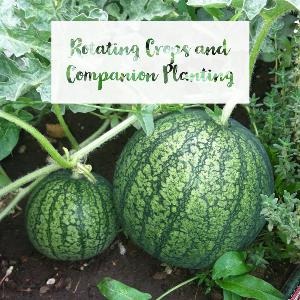Rotating crops improves yields and prevents the spread of soil borne insects and diseases. Start with leafy crops the first year, plant root crops the second year in that same space, soil-enriching peas or beans the third year, and squash and tomato family crops, including cucumbers, melons, corn, and pumpkins, the fourth year. Then start over. Peas and beans actually
improve
the soil by releasing nitrogen into it. When done producing, till the green bean and pea plants back in to build the soil even more. Tomatoes, peppers, eggplant and potatoes, should not be planted in the same place two years in a row, and it’s best if it’s at least three years between plantings in the same spot, to minimize soil borne diseases such as wilt. Companion planting combines two or more compatible crops in the same space, making small garden plots producing powerhouses. Try planting pole beans with corn, giving the corn several weeks head start. The beans use the corn for support, and in return release nitrogen to the corn. Interplant squash or pumpkins with the corn and beans, thus utilizing the ground space as well, but be prepared to wade through the foliage! Radishes planted in your cucumber hills may protect against cucumber beetles. Let some of the radishes go to seed to prolong the protection. Try planting bush beans with potatoes. These two crops help protect each other against certain types of beetles, too. Planting fast growing lettuce between cabbage or broccoli will shade it and increase production, while growing two crops in the same space. Carrots and peas can be planted together to double production in the same space, too. Onions can be planted with lettuce, tomatoes and peppers, or next to strawberries, and may repel some insects due to their odor. Cool season plants, such as spinach or lettuce, if planted on the east side of a row of corn, or sunflowers, or even trellised beans, will stay cool and produce much longer. Extra nutrition in the form of fertilizers or composts, as well as Granular HuMate, which used to be called Soil Activator, will produce the best yields.
Let's talk for a minute about rotating crops and companion planting. . .




